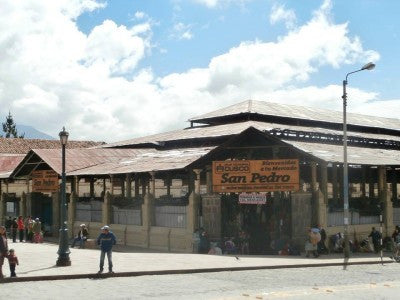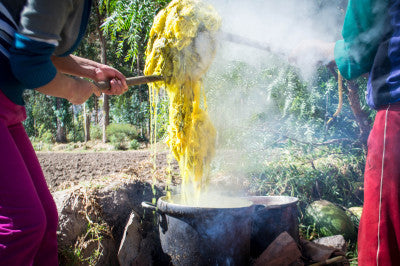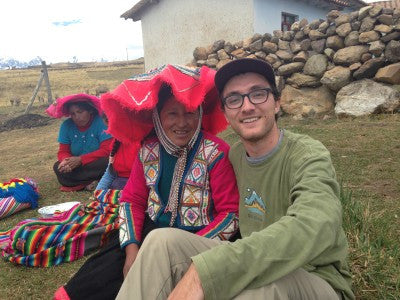The bustling market in San Pedro, just a few minutes walk from the Plaza de Armas, is stocked to the brim with any sort of thing (food, clothing, or other) you could possibly be searching for in Cusco. Threads of Peru decided to make an excursion to the market to show the world five things that we find especially exciting within the San Pedro Market.

A simple yet delicious meal that is bound to keep you going through the day. Photo by Harrison Ackerman
Arroz con Huevo y Palta (Rice with Fried Egg and Avocado)
After a long morning of walking around the streets of Cusco, you’ll need something hearty to fill your stomach and get you ready for an afternoon of adventure. When you walk into the sit-down food area of the market, do not be overwhelmed by how many options you have for arroz con huevo.You can’t go wrong! An exceptional choice of stand will also get you a mixed salad, french fries, and a refreshing glass of juice to wash it all down. Don’t forget to generously apply aji (spicy pepper sauce)!

Going down the aisle of fresh flowers will definitely put a smile on your face! Photo by Harrison Ackerman
Flowers
Located in the middle section of the market is a narrow aisle overflowing with colorful, fragrant flowers. You can find daisies, carnations, roses, and lilies in colors you had never imagined possible. A good-sized bunch will only cost you $1.50, and they’re sure to brighten up your apartment, hotel, or hostel room.

At San Pedro Market, finding spinach the size of your palm is quite normal believe it or not. Photo by Harrison Ackerman
Massive Spinach
Although all of the produce in San Pedro is likely to catch your eye, the spinach will certainly stand out as something special. Robust, fragrant green leaves that actually last more than three days in your fridge are a treat to anyone who likes to veg out on occasion. Do not skip out!

The selection of chesse is endless here in Cusco. Photo by Harrison Ackerman
Cheese
For any cheese-lover, you are in luck at the San Pedro Market. This aisle is stocked with a fine selection of Andean cheeses; salty, chewy, and moist. It doesn’t hurt that a half-wheel will only run you around $2.25. Pair with a few boiled potatoes for a surprisingly satisfying lunch or dinner.

Do all your shopping while getting an outfit tailored. Photo by Harrison Ackerman
Tailors
Here at Threads of Peru, we always have an eye out for anything textile-related. In the San Pedro Market, there are two entire aisles dedicated to the making, selling, and fixing of clothing. Tear your hiking pants on a trek? No problem. There are several men and women willing to make the quick fix.
The only way to truly understand the allure of San Pedro Market is to make the trip yourself. Keep Threads of Peru’s five things in mind, and see all that there is to see!
-Article written by Annie Marcinek










